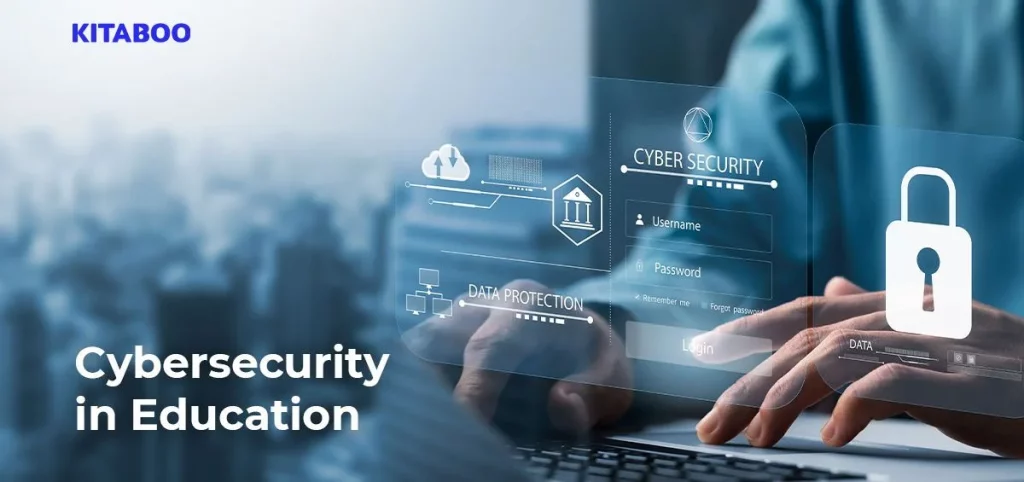
How Can Educational Institutions Mitigate Cybersecurity Threats in Education?
Increasing digitization has changed the way educational institutions run today. There is a heightened focus on remote learning and online classes. While online learning brings many benefits to students and teachers alike, it also comes with higher cybersecurity threats.
With networks and infrastructures extending beyond the safe school walls nowadays, cyber-attack threats against educational institutions are on the rise. According to recent Microsoft Intelligence findings, education is the most targeted industry, with nearly 80% of malware encounters in the last 30 days.
Cyber-attacks in educational institutions can not only cause financial loss and disruption but also jeopardize student safety. As such, schools and universities must identify cybersecurity threats and set up a defense mechanism to prevent the threats from materializing.
Critical Cyber Threats to the Education Sector
Here are some common cybersecurity threats plaguing educational institutions in 2024:
Data Breaches
Educational institutions hold a significant amount of sensitive data regarding students, teachers, staff, and parents. These may include their contact information, academic and health records, financial information, social security numbers, etc.
Access to these data without authorization is called a data breach. It is one of the most common cyber incidents.
Denial-of-Service (DoS) Attacks
A denial-of-service attack attempts to overwhelm or shut down a network, rendering it unusable to legitimate users. It prevents students from accessing the institute’s network for classes or retrieving educational material or work saved on the cloud.
Such attacks disrupt remote learning, along with affecting the institute’s reputation.
Phishing
Phishing is when attackers send emails or messages, tricking users into revealing personal or confidential information. The malicious messages often appear to come from legitimate sources duping innocent children.
Over 90% of all cyberattacks begin with phishing mail.
Ransomware Attacks
Once cybercriminals get hold of important information or critical files, they exploit the information to make outrageous financial demands as ransom.
Innocent students often fall prey to phishing attacks that can lead to serious ransomware attacks.
Installing Malware
Malware is malicious software designed to infect or damage the system and networks. They can be placed as attachments in phishing emails or viruses inside digital libraries and other unexpected places.
Zoombombing
Zoombombing is a phenomenon in which online video conferencing platforms are interrupted by intruders. They disturb the virtual classes by exposing unwanted and harmful media during ongoing classes or sessions.
How to Combat CyberSecurity Threats in Education Sector?
As hackers are getting more skilled at their game, it’s high time to step up the efforts for cybersecurity in education.
Unfortunately, the education sector cannot completely eliminate cyber security threats. However, there are certain steps institutes can take to mitigate them:
Have a Strong Security Policy
The first step to mitigating cybersecurity threats is to have a strong security policy. For instance, school networks should block access to all potentially risky sites. Similarly, app downloads by students should also be monitored and restricted.
Cybercriminals often use mobile IoT devices to get inside the institute’s network. These include laptops, desktops, smartphones, or tablets that students use to enhance digital learning.
Hence, educational institutions must include mobile security as a part of their cyber security strategies. IoT device testing and implementing end-to-end encryption can go a long way in preventing attackers from exploiting vulnerable IoT devices.
Implement Access Control
Educational Institutions have an extensive network of students, teachers, and staff. In such a scenario, it is vital to create access control limiting an individual’s access only to programs they need.
Access control has two main benefits. Firstly, it prevents individuals from viewing unauthorized information. Secondly, it limits attackers’ activities if they compromise someone’s account.
Similarly, organizations must also implement security controls for their data stored in the cloud. This not only ensures the integrity of their data but also helps them meet compliance requirements.
Install Anti-Malware Software
Malware can wreak havoc on an organization’s network, damaging files and systems and stealing sensitive information. One cannot stress enough the importance of preventing such attacks.
Therefore, educational institutions should invest in firewalls, intrusion detection, and virus and malware protection systems. It can help protect the network from various attacks, including viruses, worms, spyware, and ransomware.
Update Systems Regularly
You should always ensure that your browsers, applications, and operating systems are running the latest version. This is because the flaws and vulnerabilities of older versions, known as security holes, are more prone to cyber-attacks.
Each update fixes the vulnerabilities of the previous versions and protects against new threats. In addition, they often include security patches that fix security holes and keep hackers at bay.
Backup Your Data
Phishing and malware attacks can cause the loss of data stored on your system. Therefore, always make a copy of your important files and data and store them safely.
It is recommended to have multiple backup plans according to the sensitivity of your data. For instance, you can create cloud backups and also store data in external hardware.
This way, you can easily retrieve original data even if your system becomes a victim of ransomware attacks.
Create an Incidence Response Plan
Whatever the size of the educational institution, it needs to have an incident response plan to recover from security incidents effectively.
A detailed and documented plan will help your IT team and cyber security professionals identify what needs to be done and who needs to be notified to expedite recovery.
Without a response plan, the staff is prone to missteps that can lead to additional fines and legal actions.
Spread Awareness and Conduct Training
Most phishing attacks are geared toward individuals who are less aware of cyber-attacks and security measures. So, it’s essential to engage the school students and staff in awareness programs and train them on the best practices of cybersecurity in education.
Only a well-trained staff can ensure the success of the incident response plans.
Conclusion
With attackers getting more sophisticated daily, maintaining the safety and integrity of sensitive data can seem overwhelming. However, educational institutes can deal with security threats by taking a proactive approach to cybersecurity in education.
Robust security policies, access control, constant monitoring of databases and networks, and spreading security awareness can help schools and universities deter cybercriminal incidents.
To know more, please reach out to us now!
Suggested Reads:
Discover how a mobile-first training platform can help your organization.
KITABOO is a cloud-based platform to create, deliver & track mobile-first interactive training content.


